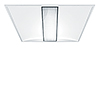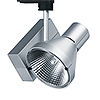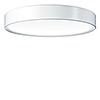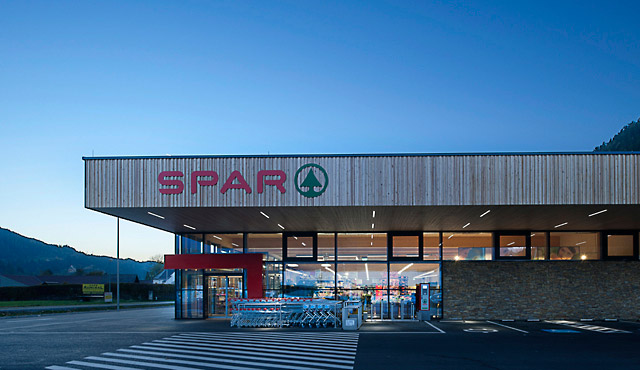Green Building Certification
The best light for people and the environment
Green Building Certification
Did you know that ...
up to 80 % of your electricity costs for lighting?
... Zumtobel can make a significant contribution towards achieving environmental
certification of buildings?
... EPDs provide transparency as far as the environmental sustainability of products
is concerned
Green Building Certification
Share of green buildings to grow in coming years
Development of sustainably built buildings
(commercial and institutional buildings)
**World Green Building Trends, Smart Market Report, McGraw-Hill Construction, 2013
In 2012, 44% of all commercial and institutional buildings were already built in a sustainable way. Recent studies*) indicate that this share will increase to 55% by 2016.
An increase is also expected for the refurbishment of buildings. In surveys**), 50% of the companies questioned reported that they had sustainable refurbishment projects in the pipeline.
Green Building Certification
A worthwhile effort
*) for LEED-certified buildings
**) up to +3% higher rents per LEED certification level
***) up to +30% higher sales value of LEED-certified office buildings
-
Higher rents
-
Higher sales value
-
Reduced energy costs
Green Building Certification
Green buildings enhance their users' well-being
-
Increase in productivity thanks to optimised lighting solution
-
Fewer days absent due to illness
-
Employer branding: a working environment that inspires people
**) CBRE Richard Ellis and USD University of San Diego, Green Buildings and Productivity (2009)
Green Building Certification
Thinking in terms of a product's life cycle
This is how we manage to continuously minimise the impact that each of our products has on the environment.
Transport
Recycling
Green Building Certification
Environmental Product Declarations (EPDs)
- The environmental certification of buildings is backed up by sound data
- Based on data obtained from a Life Cycle Assessment (LCA)
- Compliant with environmental standards acc. to EN15804 and ISO14025
- EPDs can be downloaded from the online catalogue
Green Building Certification
Our contribution towards LEED certification
-
LEED* (Leadership in Energy and Environmental Design) is an internationally recognised certification system for sustainable building.
-
Assessment of a building's construction by accredited technical experts (LEED Accredited Professionals)
-
Awarding of point score in various categories
-
LEED distinctions (LEED NC 2009**): Certified 40-49 points | Silver 50-59 points | Gold 60-79 points | Platinum 80-110 points
Up to 34*** points can be achieved if an intelligent lighting solution by Zumtobel is used
**) New Construction and Major Renovations, LEED 2009
*** incl. possible pilot credits
Green Building Certification
Austria's first LEED Platinum certified building: i+R Gruppe, Lauterach | AT
Managing Director
i+R Gruppe GmbH
Green Building Certification
Italy's largest LEED-certified building: Vodafone Village, Milan | IT
In the “Energy and Atmosphere” category, automated lighting control makes an essential contribution to saving energy (approx. -25%) and supports the intelligent use of daylight.
Green Building Certification
Experience in practice: SPAR climate-protection supermarkets in Vienna and Murau | AT
Head of Central Construction/Energy/Technology Division
SPAR
Green Building Certification
efficiency of a lighting solution throughout its entire life cycle. It not
only calculates investment costs, but also analyses the financial
aspects of an environmentally sound solution – e.g. CO2 emission
or maintenance costs. In the simplified online version, ecoCALC
light, the number of input fields is reduced to an absolute minimum,
and it can be used without prior installation on computers and
tablets; it is based on the same calculation methods as the tried-
and-tested software version and is perfectly suited for quick
calculations.
Go to ecoCALC light www.zumtobel.com/ecocalclight
The full version of ecoCALC is available at: www.zumtobel.com/ecocalc
Go to DALEC
Green Building Certification
Rock-solid energy benefits: SALEWA Headquarters Bolzano | IT
Green Building Certification


References
-
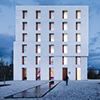 2226
2226
Lustenau, Austria -
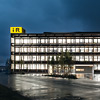 i+R Gruppe Lauterach | AT
i+R Gruppe Lauterach | AT
-
 VODAFONE Village Milan | IT
VODAFONE Village Milan | IT
-
_Oskar_Da_Ritz.jpg) SALEWA Headquarters Bolzano | IT
SALEWA Headquarters Bolzano | IT
Employer branding at the highest level -
 SPAR climate-protection supermarkets in Murau and Vienna | AT
SPAR climate-protection supermarkets in Murau and Vienna | AT
Setting an example – Saving energy -
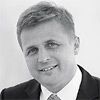 Interview with Gerald Geiger
Interview with Gerald Geiger
Head of “Construction / Energy / Technology” at SPAR Austria
| Propietario: | Baumschlager Eberle, Lustenau (AT) |
| Arquitecto: | Baumschlager Eberle, Lustenau (AT) |
| Diseño luminotécnico: | Symetrys, Lustenau (AT) |
| Luminotecnia: | Graf Elektro, Dornbirn (AT) |
| Sistema eléctrico: | Graf Elektro, Dornbirn (AT) |
Con ayuda de un innovador programa informático se toman en consideración las condiciones meteorológicas y la cantidad de las personas presentes en el inmueble. Zumtobel desarrolló un concepto de iluminación hecho a la medida exacta de este revolucionario proyecto de construcción y que cumple las altas exigencias del arquitecto en materia de eficiencia, diseño y multifuncionalidad.
El complejo de oficinas, con una superficie útil de casi 2.500 metros cuadrados, aloja el estudio de arquitectura de Eberle, "be baumschlager eberle", otros despachos, una cafetería y dos renombradas galerías. La solución luminotécnica contempla esta diversidad de áreas, adaptándose a la perfección a las distintas tareas de iluminación. De la iluminación general, así como de la orientación y guía de tanto las personas que trabajan en el edificio como las que lo visitan, se encarga la luminaria decorativa LINARIA. Funcionales y estéticas luminarias de pie aportan la óptima iluminación de los puestos de trabajo en las oficinas. Spots LED de la serie PANOS INFINITY proporcionan en las superficies de tránsito de la planta de oficinas una iluminación básica homogénea, destacándose por una particularmente alta calidad lumínica.
Zumtobel. La Luz.
share it
| Propietario: | i+R Gruppe, Lauterach (AT) |
| Arquitecto: | Dietrich und Untertrifaller |
| Diseño luminotécnico: | Bartenbach Lighting Laboratory |
| Fotografías: | Zumtobel |
| Environmental certificate: |
LEED® Platinum
|
Intelligent use of daylight in the entire building
The use of daylight plays a vital role in the entire building. Although one aim is to increase efficiency, the main goal is to create perfect working conditions for the staff, explains i+R Managing Director Reinhard Schertler: “For our new i+R headquarters, our top priority was to provide our staff with the best possible ambience. An innovative artificial lighting concept that maximises the use of daylight and thus has a positive impact on our employees' well-being was therefore of utmost importance to us.”
A daylight-based control system ensures a perfect combination of daylight and artificial lighting and creates optimum lighting conditions for the staff. Changes in lighting intensity are detected by sensors in the rooms and are automatically balanced. The resulting slow increase or decrease of the lighting level is hardly perceivable to the human eye. Despite the high degree of automation, the lighting solution leaves plenty of room for individual preferences, for all staff members can adjust lighting intensity levels, incident sunlight and temperature according to their personal needs.
Using this energy-saving lighting solution largely based on LED and further supported by presence detectors, the i+R Group was able to cut lighting-related energy consumption by up to 70 percent. In collaboration with the lighting designers of the Bartenbach Lighting Laboratory, Zumtobel managed to develop a lighting solution that provides a high degree of flexibility based on cutting-edge technology. Thus, it meets not only the specific needs of the i+R Group and complies with the high standards placed on LEED Platinum certified buildings, but is also sufficiently compatible and adjustable to fulfil the highest requirements in terms of sustainability and comfort in the long term.
Transparency thanks to environmental product declarations (EPD)
Zumtobel is the first company in the lighting industry to introduce environmental product declarations in compliance with the international ISO 14025 and EN 15804 standards. These so-called EPDs doc-ument the environmental impact of a product throughout its life cycle, for instance in terms of CO2 balance, recycling percentage, material composition or recyclability. In particular when it comes to building certification standards such as LEED, EPDs ensure the necessary transparency and are an essential component of the certification process.
In addition, Zumtobel supports its partners and customers during the building certification process by providing in-house experts for green building. Thanks to their comprehensive know-how, they are able to give valuable advice regarding the development of a sustainable lighting solution, in particular with respect to the different certification processes.
share it
| Arquitecto: | Dante O. Benini & Partners Architects, Milan (IT) |
| Diseño luminotécnico: | Dante O. Benini & Partners Architects, Milan (IT) |
| Luminotecnia: | Studio AS ingg Srl, Milan (IT) |
| Sistema eléctrico: | Milani Giovanni & C. Srl, Osnago Lecco (IT) |
| Environmental certificate: | LEED® Silver |
Intelligent use of daylight and efficient lighting contribute to building certification processes
The Vodafone Village consists of three linked buildings covering an area of over 67,000 m², which now boast an all-embracing lighting solution. This solution stands out thanks to its energy efficiency and minimal maintenance costs; it also meets high standards in terms of aesthetics, lighting quality and safety.
Vodafone's headquarters obtained certification according to LEED standards (LEED® 2009 ID+C: Commercial Interiors) and qualified for Silver (52/110 possible points). The building complex is at present the largest LEED-certified building in Italy.
In the “Energy and Atmosphere” category, automated lighting control makes an essential contribution to saving energy (approx. -25%). At the same time, systems for reducing energy consumption inside the building allow for further energy savings of up to 70%.
In order to enhance the staff members' sense of well-being, measures involving the “indoor climate” category have been planned and implemented as well: inside the complex, strategies to ensure high air quality have been applied, such as the installation of CO2 sensors for the densely occupied areas and an increase in the level of air exchange. Finally, the use of construction materials with low emissions of VOC (Volatile Organic Compounds) helps to create an extremely comfortable and healthy atmosphere in these working environments.
share it
| Propietario: | Oberalp Salewa (IT) |
| Arquitecto: | Cino Zucchi Architetti and Park Associati (Filippo Pagliani, Michele Rossi), Milan/Italy |
| Planificación eléctrica: | Energytech, P.I. Gabriele Frasnelli, Bolzano/I |
| Fotografías: | Oskar da Ritz; Zumtobel |
| Environmental certificate: | Climate House |
Everything under one roof
This extraordinarily shaped building accommodates a variety of functions under one roof:
- Office and administrative premises for approximately 160 staff members
- Storage facilities for logistics
- Largest climbing gym in Italy for up to 250 climbers
- Fitness room for staff members
- Day nursery
- Public assembly room
The individual takes centre stage
The design focused on the individual – above all the staff members. The South Tyrolean model company wants to set an example of an active lifestyle – this is especially important for a mountaineering expert. The building also boasts an integral energy and lighting concept that was certified according to the acclaimed South Tyrolean “Climate House” concept; some parts of the building even achieved the highest level of certification – Gold. As to building materials, care was taken to reduce transport routes, and hence the building's carbon footprint, as much as possible. 90 percent of the suppliers are located in the immediate vicinity. The solar panels on the building produce more energy than it needs. In addition, technologies for heat recovery, heating and cooling the building with additional controllable surface temperature adjustment resulted in potential reductions of 330tonnes of CO2 per year. This amazing value is achieved also thanks to a two-layer glass façade mounted in front of the load-bearing concrete elements for the ceiling and the pillars, which serves as back-ventilated thermal protection with sunscreen glazing on a steel structure.
share it
| Propietario: | SPAR |
| Arquitecto: | Murau: Veider Röthl Kaltenbrunner, Leoben (AT); Vienna, Engerthstrasse: 3D, Design.Development-Display, Vienna (AT) |
| Planificación eléctrica: | Murau: TB Mayr, Bruck a. d. Mur (AT) |
| Sistema eléctrico: | Murau: Klampfer, Leonding (AT); Vienna, Engerthstrasse: EMC, Böheimkirchen (AT) |
| Environmental certificate: | ÖGNI Gold |
For these supermarkets, Zumtobel developed a uniform lighting concept based on LED luminaires only. In combination with other innovative structural measures, the branches will save 50% of energy and up to 80 t of CO2.
Around 35 SPAR and EUROSPAR stores in Austria alone have already been upgraded in line with this new concept in a consistent effort to pursue sustainability as a design objective.
The role of lighting
Alongside heating and cooling systems, lighting accounts for a significant proportion of energy consumption.
LEDs are characterised by their long service life. Good thermal management reduces maintenance effort and hence costs. In the case of emergency luminaires, the client benefits from their low installed load.
25% of the energy required for lighting was saved by using LEDs. This result is confirmed by ongoing assessments carried out by SPAR.
The climate-protection supermarkets in Murau and Vienna were gold certified by the Austrian Association for Sustainable Real Estate Management (ÖGNI).
share it
-
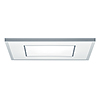 CAREENA
CAREENA
-
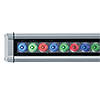 HEDERA
HEDERA
-
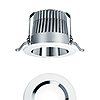 CRAYON
CRAYON
-
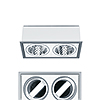 2LIGHT
2LIGHT
-
 TECTON
TECTON
-
 ONLITE RESCLITE
ONLITE RESCLITE
-
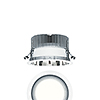 PANOS INFINITY
PANOS INFINITY
After two or three years of operation, the first results are now available regarding the energy-saving potential realised. Gerald Geiger (Head of the Central Construction/Energy/Technology Division) sums up how things have developed.
Spar opted for an LED-only lighting solution. What were the reasons for this decision, and what experience have you gained so far?
It turned out very soon that the lighting system is the second largest power eater at our sites, right after the heating & cooling systems. So obviously this is where we wanted to start. Our experience so far nothing but confirms our decision. We have been able to reduce lighting-related energy consumption by 25 percent while at the same time improving the lighting quality.
Your target is to reduce energy consumption by at least one third for each new or refurbished Spar supermarket by using new technologies. Spar's climate protection branches consume only half of the energy used by a conventional supermarket, thus saving up to 80 tonnes of CO2 per year.
What are the results with respect to these ambitious targets after the first two years of operation?
After more than one year of operation of our SPAR climate protection supermarkets in Murau (Styria) and Vienna (on Engerthstrasse), it is now clear that these two sites use 58 percent less energy than before the complete redesign, which is an incredible result. Of course we monitor these results, putting them in proportion to conventional SPAR supermarkets of similar size as well.
How are these savings measured; is there a specific monitoring system for the various areas?
330 systems are currently being monitored; this number increases continuously. A variety of key figures are determined here (power consumption per m² of retail space, hours of operation of the lighting system, gas and water consumption, standby losses and the like). We make every effort, including this monitoring, to ensure that our supermarkets' energy efficiency is continuously improved. Moreover, the monitoring system allows us to check new technologies in detail for their actual savings potential.
You deliberately set an example in terms of climate protection. Among other things, the supermarkets in Murau and Vienna were awarded Gold certification by the Austrian Association for Sustainable Real-Estate Management (ÖGNI).
How do customers, suppliers and staff members respond to the topic of sustainability?
Climate protection and sustainability have by now been firmly established in our society. We are getting highly positive feedback to our efforts in this respect, both from our customers and our suppliers and staff members.
share it
PROGRAMAS




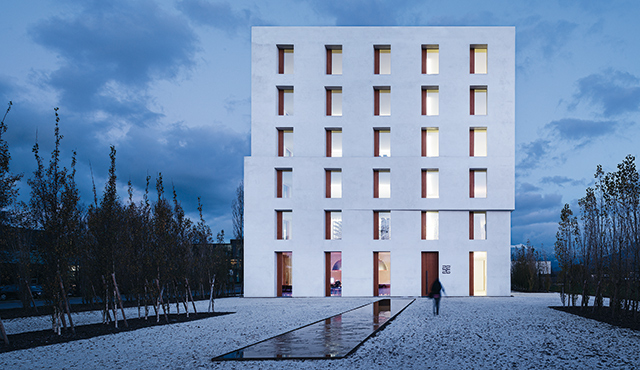







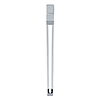
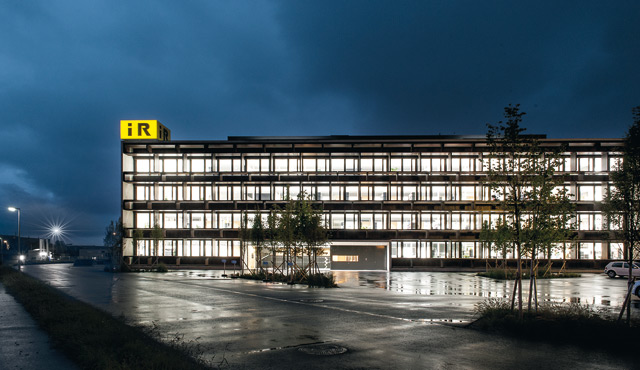














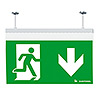
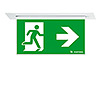

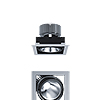
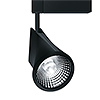

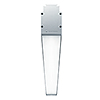

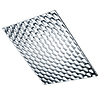
_Oskar_Da_Ritz.jpg)
_Oskar_Da_Ritz.jpg)






